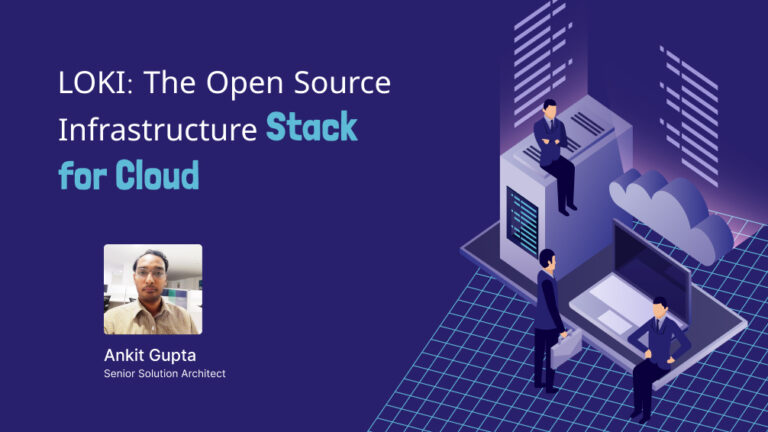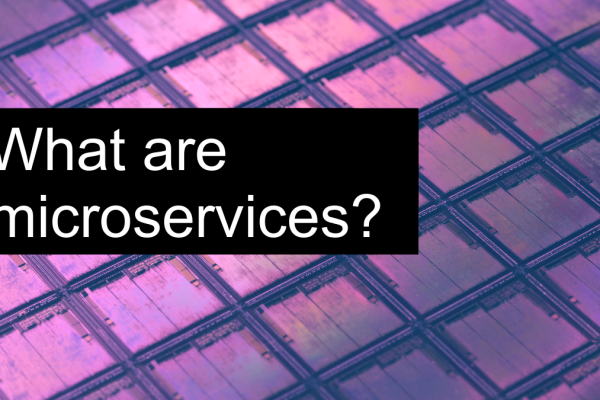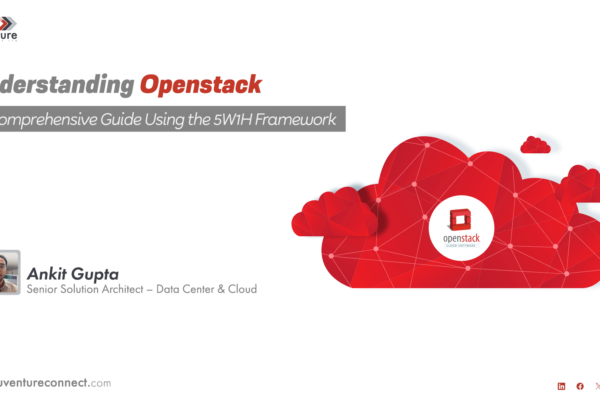Introduction
LOKI, an acronym for Linux, OpenStack, Kubernetes, and Infrastructure, represents a powerful combination of open-source technologies that synergistically work together to provide a dynamic and flexible platform for managing and orchestrating modern IT Cloud environments.
Linux – The Foundation:
At the core of LOKI is Linux, the open-source operating system that forms the foundation of IT infrastructure.
Linux’s stability, security, and scalability make it an ideal choice for hosting a wide range of applications and services.
OpenStack – Cloud Infrastructure Management:
OpenStack, the open-source cloud computing platform, plays a pivotal role in the LOKI framework. OpenStack can manage and orchestrate virtualized resources, creating a scalable and agile cloud infrastructure.
OpenStack facilitates the provisioning of virtual machines, storage, and networking components, allowing organizations to build private or public clouds tailored to their specific needs.
The integration of OpenStack in LOKI adds a layer of flexibility and automation to the infrastructure, promoting efficiency and resource optimization.
Kubernetes – Container Orchestration:
Kubernetes, commonly known as K8s, is a container orchestration platform that automates the deployment, scaling, and management of containerized applications.
Containers encapsulate applications and their dependencies, ensuring consistency and portability across different environments.
LOKI have the power of Kubernetes to efficiently manage containerized workloads, providing a standardized and scalable approach to deploying applications.
Kubernetes enhances the agility of the infrastructure, allowing for seamless scaling and updating of applications .
Infrastructure – Unifying the Ecosystem:
The “I” in LOKI represents Infrastructure, signifying the overarching integration of Linux, OpenStack, and Kubernetes into a cohesive and synergistic ecosystem.
LOKI addresses the complexities of modern IT environments by providing a unified platform that seamlessly integrates these open-source technologies.
This integration streamlines the management of resources, enhances scalability, and simplifies the deployment of applications, making LOKI an ideal solution for organizations looking to modernize their infrastructure.

LOKI: The Three-Headed Beast Taming Modern Cloud Infrastructure
In the ever-evolving landscape of cloud computing, LOKI emerges as a formidable creature, wielding the combined might of three open-source giants: Linux, OpenStack, and Kubernetes. Its name, an acronym for these fundamental technologies, hints at the power it unleashes when they converge into a single, unified infrastructure stack.
Born from Convergence:
For years, the cloud world saw the rise of independent giants.
Linux ruled the roost as the ubiquitous operating system.
OpenStack carved its niche as the go-to platform for large-scale infrastructure orchestration, and Kubernetes dominated the containerized app world.
The agility and scalability of containers proved irresistible, even for traditional workloads managed by OpenStack.
The LOKI architecture brings these titans together, leveraging their individual strengths to create a comprehensive, flexible, and powerful cloud infrastructure solution. It’s not just about stacking technologies; it’s about harnessing their synergy.
The Magic of Integration on LOKI Components :
The LOKI is a Integration of Technology stack.
OpenStack can deploy Kubernetes clusters as virtual machines, allowing containerized workloads to benefit from the platform’s advanced capabilities.
Kubernetes can manage OpenStack services as microservices, offering granular control and scalability. This two-way street unlocks a world of possibilities.
Benefits abound:
Agility and Efficiency:
Deploy and scale applications faster and more efficiently with containerized flexibility managed by Kubernetes.
Openness and Control:
Remain vendor-agnostic and in control of your infrastructure, leveraging the power of open-source technologies.
Reliability and Scalability:
Enjoy the inherent resilience of OpenStack and the dynamic scaling capabilities of Kubernetes for a robust and adaptable cloud.How LOKI Empowers You to Create an Open Source Cloud Infrastructure
Flexibility and Choice:
Run both traditional and modern workloads seamlessly, choosing the best tool for the job within the unified LOKI framework.
Step-by-Step Implementing LOKI for Cloud Infrastructure
Implementing LOKI for your cloud infrastructure involves a series of steps, each focusing on the integration of Linux, OpenStack, Kubernetes, and Infrastructure components. Follow this step-by-step guide to set up a LOKI-based environment:
Linux Installation: Establish the Foundation
Ensure a reliable Linux distribution is installed on your servers to serve as the foundational layer of LOKI. Popular choices include Ubuntu, CentOS, or Red Hat Enterprise Linux. Follow the distribution-specific installation guides to set up a robust Linux environment.
OpenStack Deployment: Configuring Cloud Infrastructure
Deploy OpenStack to create a cloud infrastructure layer. You can choose to install OpenStack components manually or use a deployment tool like OpenStack-Ansible or DevStack for quicker setup in a development environment. Key components to configure include Keystone (identity service), Nova (compute service), Glance (image service), Neutron (network service), and Cinder (block storage service).
Kubernetes Installation: Orchestrating Containers
Install Kubernetes to manage containerized applications. Use a container runtime like Docker or containerd and choose a Kubernetes distribution such as kubeadm, kops, or a managed Kubernetes servicel& Key components include kubelet, kube-proxy, kube-scheduler, kube-controller-manager, and the Kubernetes API server.
Integration of OpenStack with Kubernetes: Magnum and Kuryr
Integrate OpenStack with Kubernetes to bridge the cloud infrastructure and container orchestration layers.
Magnum, an OpenStack project, to provision and manage Kubernetes clusters.
Deploy Kuryr to enable Neutron networking for Kubernetes pods communication between containers and OpenStack-managed resources.
Containerization of Applications: Dockerizing Workloads
Prepare your applications for containerization by creating Docker containers.
Write Dockerfiles to define the container images, including the application code, dependencies, and runtime environment.
Build and push these Docker images to a container registry accessible to your Kubernetes cluster.
Kubernetes Deployment of Applications: YAML Manifests
Create Kubernetes YAML manifests to deploy your containerized applications. Define deployment, service, and ingress resources to specify how the applications should be deployed, exposed, and accessed. Apply these manifests using the `kubectl apply` command to deploy your applications on the Kubernetes cluster.
Continuous Integration/Continuous Deployment (CI/CD): Automation
Implement CI/CD pipelines to automate the testing, building, and deployment of your applications.
Integrate tools like Jenkins, GitLab CI, or Travis CI to streamline the development lifecycle.
Monitoring and Logging: Prometheus and Grafana
Implement monitoring and logging solutions to gain insights into your LOKI-based infrastructure. Prometheus for monitoring and Grafana for visualization. Integrate these tools with your Kubernetes cluster to monitor resource usage, application performance, and cluster health.
Security Considerations: Implementing Best Practices
Prioritize security by implementing best practices for each component.
Secure communication between components using SSL/TLS, configure firewalls, and regularly update software and security patches.
Kubernetes RBAC (Role-Based Access Control) and OpenStack Keystone for access control.
Join the OpenInfra Summit, which is the annual gathering of the LOKI community and the industry. You can network, learn, and share your experiences and insights with LOKI.
Explore and experiment with LOKI on your own or with the help of the OpenInfra Labs, which are collaborative environments where you can access and use LOKI. You can also contribute to the development and testing of LOKI
By following these steps, you can successfully implement LOKI for your cloud infrastructure, creating a dynamic and flexible environment that combines the strengths of Linux, OpenStack, Kubernetes, and Infrastructure components. Regularly monitor, update, and optimize your setup to ensure it aligns with the evolving needs of your organization.
Download and install one of the OpenInfra distributions, which are pre-packaged and ready-to-use versions of LOKI. You can choose from different options, such as Mirantis Cloud Platform, Canonical Charmed OpenStack, SUSE OpenStack Cloud, and more.
Conclusion:
In conclusion, LOKI serves as a transformative force in the realm of cloud infrastructure, unifying Linux, OpenStack, and Kubernetes into a harmonious and powerful stack. Born from the convergence of independent giants, LOKI represents more than just a combination of technologies.
The integration of Linux, OpenStack, and Kubernetes in LOKI not only addresses the complexities of modern IT environments ,also By following the step-by-step implementation guide, organizations can successfully deploy LOKI and create a dynamic, flexible, and open-source cloud environment.
Regular monitoring, security considerations, and active participation in the LOKI community through events like the OpenInfra Summit ensure that the infrastructure remains robust, secure, and aligned with the evolving needs of the organization.




